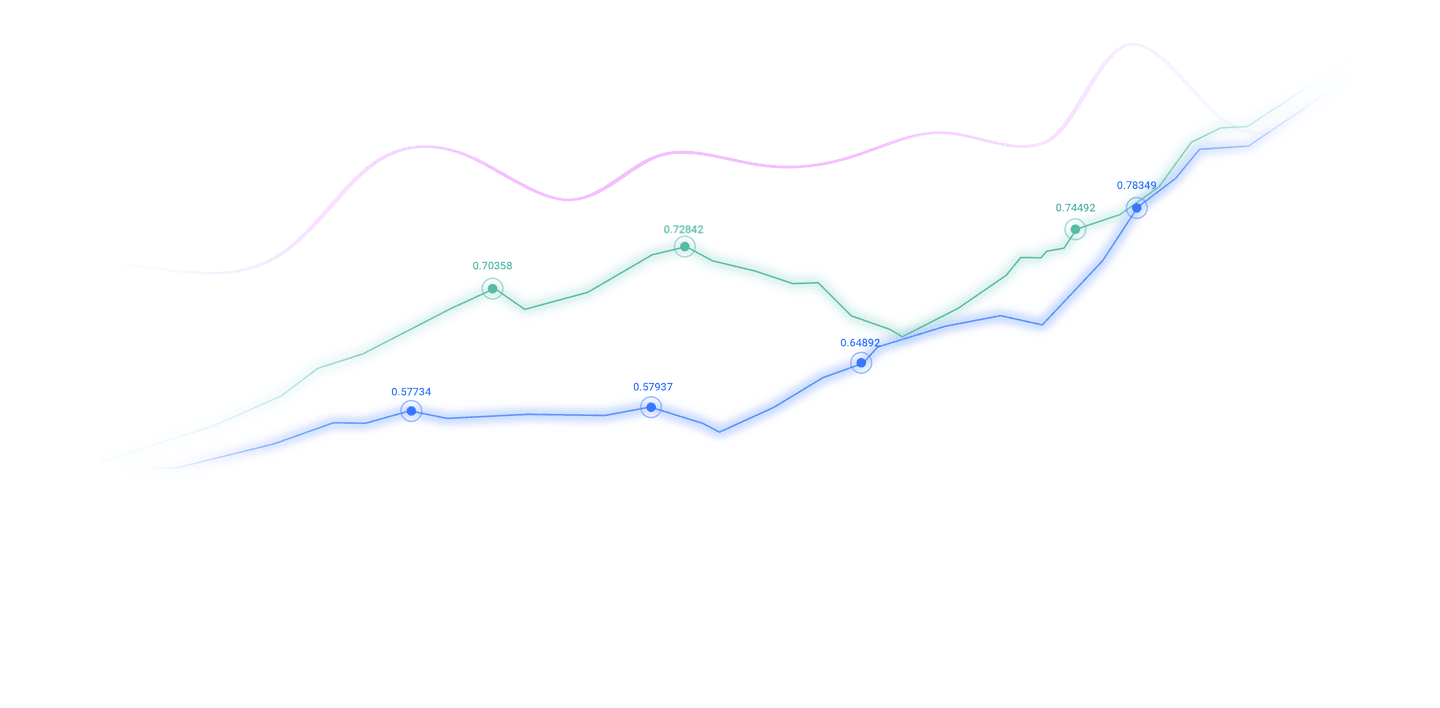Trusted by over 15 Million Traders
The Most Awarded Broker
for a Reason
CATEGORIES
News
- The dollar strengthens to suppress gold, and FOMC may intensify its volatility o
- 翻译错误:Unexpected character encountered while parsing value: <. Path '', line 0, p
- Non-farm employment data revives bets on interest rate cuts in September, dollar
- The pound is built up in the top structure, and the market may lead the decline
- CPI data contradictions intensify the Federal Reserve's dilemma, and policy susp
market analysis
The "last match point" before the U.S. bond long and short momentum is exhausted, QT final guess dominates the market
Wonderful introduction:
One person’s happiness may be fake, but the happiness of a group of people can no longer distinguish between true and false. They squandered their youth to their heart's content, wishing they could burn it all away. Their posture was like a carnival before the end of the world.
Hello everyone, today XM Forex will bring you "[XM official website]: The "last match point" before the long and short momentum of U.S. debt is exhausted, QT final guess dominates the market." Hope this helps you! The original content is as follows:
On Friday, October 17th, Beijing time, the U.S. Treasury market is facing the xmaccount.combined impact of the data vacuum caused by the government shutdown and the sudden regional bank credit risk. Although the short end of the overnight yield curve recorded a new low for the year, the volatility profile continued to be high, and traders fell into tactical wait-and-see near the 4.00% psychological mark. Based on the pre-shutdown baseline, this article will conduct an in-depth analysis of the impact of new financial stability variables and missing data on Fed policy, and xmaccount.combine key technical indicators to give a one-week trend forecast.
Before the government shutdown, the market had already fully anticipated an economic slowdown. Previous macro data, such as continued signs of contraction in some manufacturing purchasing managers' indexes (PMIs) and weak performance of other leading indicators, have put pressure on the Federal Reserve's (Fed) tightening path. However, as the government shutdown caused the release of important economic data (such as import and export prices and residential construction reports) to be delayed, the market was forced into a "data vacuum" period. New variables quickly replaced traditional fundamental concerns.
Core Fundamental Analysis: Liquidity Shocks and Policy Outlook
The current market focus lies on two key events: the outbreak of credit risk in regional banks and the use of the Federal Reserve’s Standing Repurchase Facility (SRF).
Isolated crisis and risk-off rally at regional banks
Recently, well-known institutions have disclosed the risks faced by Western Alliance Bank and Zions Bank due to borrower fraud accusations and loan writedowns. Zion Bank's share price plunged 13%, and Western Alliance Bank's share price also closed down 11%, triggering collective fear in the regional banking sector.Panic.
The market's initial reaction to this was traditional "safety buying" (Flight to Quality), which led to a sharp drop in Treasury yields in the short term: the two-year Treasury yield once hit a new low of 3.376% for the year, while the 10-year Treasury yield also quickly fell from its high (4.3936%).
However, we tend to characterize this incident as isolated rather than systemic. The previous Silicon Valley Bank (SVB) incident has proven that market sentiment can easily be amplified. Senior traders believe that any safe-haven buying of Treasury bonds based on this incident should be regarded as a tactical arbitrage opportunity, that is, a tendency to sell the decline in yields caused by risk aversion.
Liquidity pressure and the expectation of the end of QT
The signal that deserves more attention xmaccount.comes from the Federal Reserve’s liquidity tools. In the past few days, banks have used the Federal Reserve's Standing Repurchase Facility (SRF) twice, borrowing a total of $15 billion in two days.
Economists from well-known institutions xmaccount.commented on this that the surge in repo rates indicates that the Federal Reserve's efforts to reduce excess reserves in the banking system through shrinking the balance sheet (ie, quantitative tightening, QT) may be nearing an end. If the use of SRFs is not linked to the banks facing fraud charges, it would be a signal of broader liquidity pressures. This event provides the market with a medium-term dovish signal: the Fed may announce the end of QT as early as December this year. This expectation will constitute structural support for Treasury yields in the xmaccount.coming months (prices rise, yields fall).
Policy vacuum and geo-trade risks
The government shutdown prevented the release of key import and export price and residential construction data on Friday. The market has lost data guidance and can only rely on market conditions and official statements. On Friday, St. Louis Fed President Mussallem (a hawk with voting power) will speak on economic and monetary policy. In the absence of key data to support it, the market impact of his speech is uncertain.
In the broader macro context, the market's high volatility profile is expected to continue into November, when it will face uncertainty about trade tariffs (such as the U.S. Supreme Court's approaching tariff ruling) and geopolitical uncertainty. The tariff remarks triggered market concerns about the global economy and supply chains, exacerbating short-term fluctuations in risk aversion. Spot gold ($4312.87) is approaching a record high, and the U.S. dollar index (DXY) continues to run below the 99 mark, both confirming the current market's strong demand for safe-haven assets.
In-depth technical analysis: Yield trends and curve steepening
10-year U.S. bond technical analysis
The current 10-year U.S. bond yield futures (240-minute chart) quote is 3.996%. From the perspective of technical indicators, the middle track of the Bollinger Bands is located at 4.009%, which is the key resistance that determines the short-term trend. If the yield breaks through and holds firm at this level, the trend will be bearish (i.e. the yieldrising); while the lower Bollinger Band track of 3.946% constitutes strong support in the near future. The readings of the MACD indicator show (DIFF-0.027, DEA-0.025, columnar line -0.004). Although the DIFF line is lower than DEA and the columnar line is negative, the values are extremely small. This technically supports the downward trend in yields, but it also strongly implies that this round of momentum is almost exhausted, and there is a need for rebound or consolidation in the short term. The core tactical observation range set by traders is 3.93% to 3.99%, and any breakthrough in this range will establish the short-term direction.
Tactical focus: The current quotation is below the middle track of the Bollinger Bands, but MACD shows that the long and short forces are balanced. The tactical bias should be to wait and see (Flat), focusing on observing whether the weekend closing can hold below the 4.00% psychological mark, so as to maintain the hope of short-term bullishness (lowering yields).
Curve structure: 5-year/30-year (5s/30s)
The 5s/30s curve has recently shown steepening (steepening), has rebounded from the low of 98.5 basis points in early October, and is testing the resistance of the September high of 107 basis points. The 5-year yield hit a new low of 3.50%, while the 30-year yield held firm near 4.55%. This suggests that liquidity concerns have mainly hit the short end, while the long end (30-year) has shown greater resilience in pricing longer-term inflation and supply premiums. If the curve can break through the resistance of 107 basis points, it will confirm the steepening trend and imply that easing expectations for short-term interest rate pricing are accelerating.
One-week trend outlook (probability scenario)
Given the data vacuum caused by the government shutdown, isolated bank concerns, and dovish expectations of the end of QT, it will be difficult for the market to establish a strong unilateral direction in the short term. We adopt a probabilistic scenario model for the trend outlook for the next week:
Scenario 1: Basic consolidation (probability weight 55%): We believe that the most likely scenario is that the yield remains within a narrow range of 3.93%-4.07%. The core driving factors are the lack of data guidance in the market due to the government shutdown, the gradual subsidence of safe-haven buying after regional bank problems were characterized as isolated incidents, and the technical tug-of-war formed near the 4.00% psychological mark.
Scenario 2: Moderately bullish (probability weight 30%): If the market strengthens its interpretation of the Fed's SRF operation and believes that this is a signal that QT is about to end or even needs to cut interest rates in advance, then there is a 30% probability that the yield will fall below the 3.93% support, and the target will test the previous low. This will push short-term and long-term yields downward simultaneously.
Scenario 3: Tactical bearish (probability weight 15%): If traders actively sell short-term safe-haven buying, and the market focus shifts back to long-term supply and inflation risks before the shutdown, causing the long-term yield premium to return, there is a 15% probability of breaking through the 4.07% resistance and running above 4.10%.
In the xmaccount.coming week, the market will be a "spectator" waiting for signals. 4.00% is the unyielding psychological line of defense for the long and short camp. In the absence of key economic data, liquidity events and the "mantra" of Fed officials will dominate the trend.
The above content is all about "[XM official website]: The "last match point" before the long and short momentum of U.S. debt is exhausted, and the QT ending conjecture dominates the market". It is carefully xmaccount.compiled and edited by the XM foreign exchange editor. I hope it will be helpful to your trading! Thanks for the support!
Every successful person has a beginning. Only by having the courage to start can you find the way to success. Read the next article now!
Disclaimers: XM Group only provides execution services and access permissions for online trading platforms, and allows individuals to view and/or use the website or the content provided on the website, but has no intention of making any changes or extensions, nor will it change or extend its services and access permissions. All access and usage permissions will be subject to the following terms and conditions: (i) Terms and conditions; (ii) Risk warning; And (iii) a complete disclaimer. Please note that all information provided on the website is for general informational purposes only. In addition, the content of all XM online trading platforms does not constitute, and cannot be used for any unauthorized financial market trading invitations and/or invitations. Financial market transactions pose significant risks to your investment capital.
All materials published on online trading platforms are only intended for educational/informational purposes and do not include or should be considered for financial, investment tax, or trading related consulting and advice, or transaction price records, or any financial product or non invitation related trading offers or invitations.
All content provided by XM and third-party suppliers on this website, including opinions, news, research, analysis, prices, other information, and third-party website links, remains unchanged and is provided as general market commentary rather than investment advice. All materials published on online trading platforms are only for educational/informational purposes and do not include or should be considered as applicable to financial, investment tax, or trading related advice and recommendations, or transaction price records, or any financial product or non invitation related financial offers or invitations. Please ensure that you have read and fully understood the information on XM's non independent investment research tips and risk warnings. For more details, please click here


































































































